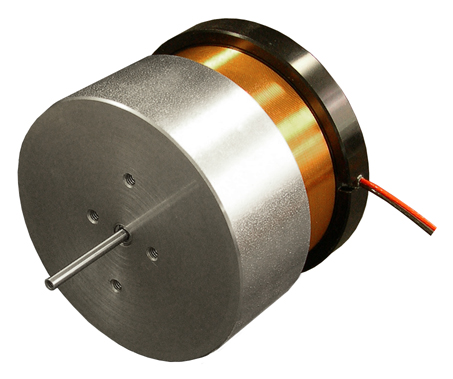
Voice coil actuators are most commonly used for micro- or nano-positioning applications, with strokes from 10 nm up to 100 mm. In addition to very precise positioning capabilities, voice coil actuators provide extremely smooth movement. They’re often paired with air bearings, crossed-roller guides, or linear shafts and round bearings to provide assemblies that are backlash-free. And they can provide either very high or extremely slow acceleration and deceleration rates.
Voice coil actuators consist of two main parts: a permanent magnet and a coil winding. When current is applied to the coil, a force is generated in direct proportion to the amount of current. This force causes the moving part – which can be either the magnet or the coil – to travel. For a complete description of their operating principle, see the related article: Voice coil actuator basics.
The original application for voice coil actuators was to vibrate the paper cones in loudspeakers – hence, the term “voice coil.” But they have found uses in a variety of industries that require precise, well-controlled movement in the single-and sub-millimeter range.
A leading example of an industry that has adopted voice coil actuators is the medical industry. Medical devices in particular have undergone a significant reduction in size and weight in the past several years, making them more portable than ever. But achieving this overall size and weight reduction required that every component be as small and lightweight as possible. Voice coil actuators fit this trend and proved to be a reliable, efficient, and precision motion solution. Examples of medical devices that incorporate voice coils are portable ventilators and pumps for metering and dosing.
Many different industries use optics, which includes any application that manipulates or detects light, including mirrors, lenses, microscopes, and lasers. Movement of these devices often falls in the single-millimeter to nanometer range and must be extremely precise. Here, voice coil actuators also excel, especially because they have no hysteresis, which can affect the precision of bi-directional movements. They can also be assembled into multi-axis stages, to control X-Y or X-Y-Z motion of optics equipment.
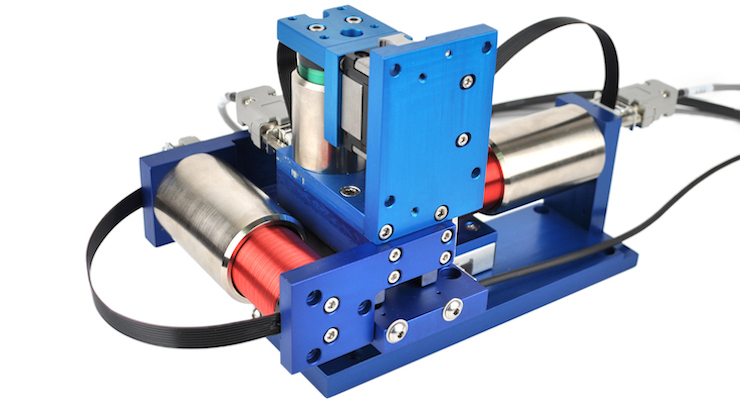
Image credit: H2W Technologies, Inc.
Applications in the semiconductor and electronics industries are known for requiring extremely high throughput and micron- or nanometer-level resolution. Voice coil actuators with a moving coil (as opposed to a moving magnet) have low mass and low inertia, which enables the high acceleration and deceleration rates required for applications that involve mounting, assembly, and testing of semiconductors and electronic assemblies, such as cameras and screens for mobile phones. The low inertia of moving coil actuators also makes them the preferred choice – especially when compared to solenoids – for oscillating applications such as shaker devices and stabilizing platforms.
Feature image credit: The Precision Alliance
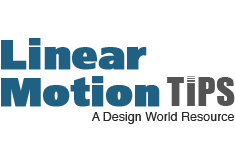
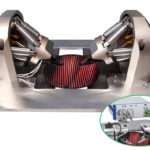
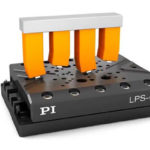
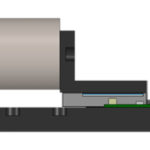
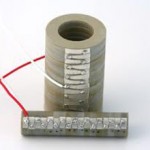


Leave a Reply
You must be logged in to post a comment.